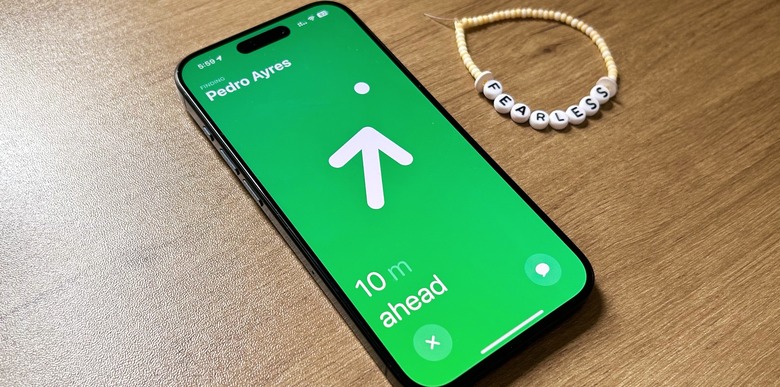iPhone 15 Helped Me Find My Friend At A Taylor Swift Concert - Here's How It Works
One of the features I wanted to test was the second-generation ultrawideband chip available on Apple's new iPhone 15 series. According to Apple, it can reach three times further than the previous U1 chip, which was used in all iPhones from 11 to 14, AirTag, and even AirPods Pro 2.
While I was uncertain about how much better this technology could be, I knew when to put it to the ultimate test: during the last concert of Taylor Swift's The Eras Tour in São Paulo, Brazil. Over 50,000 people, poor 5G connectivity, and a dream: find a seat next to my friend.
Of course, I knew, more or less, where he was. When I entered the venue, I first tried to see if I was getting closer to him. When I was around 100 feet from him, the Find My app switched the "Direction" button to "Find." That's when I knew I was getting closer.
Once the Precision Find started working, it was super easy to locate my friend. Like an AirTag, Precision Find on iPhone 15 gives you the exact location, and I was surprised it worked so well. After all, Apple's claim that you can find a friend in a crowd is true, but there are a few requirements to make it work.
How to use Precision Find with a friend on iPhone 15
While the U1 chip is available with several iPhone models, and many people can use this function to send and receive AirDrop files quicker or find their AirTag/AirPods, it requires new hardware to take advantage of Precision Find on iPhone 15.
That said, I could only find my friend because I have an iPhone 15 Pro, and he has an iPhone 15. We both had Bluetooth and Wi-Fi and shared our location on the Find My app.
If you meet all of these criteria, you can also start finding your friends or family members with the iPhone 15: as long as you're around 100 feet from them, both have the latest phones and share Find My location.
Once you tap "Find" on the iPhone, the other person will get a notification saying you're trying to find them.
Wrap up
From now on, I'm sure locating my friends will be easier at concerts, festivals, and other crowded places. I was happy I could make this feature work, and over the years, I'm sure more people will benefit from this function as the next batch of Apple technologies should be packed with the second-generation ultrawideband chip.
Below, you can learn more about the iPhone 15.

